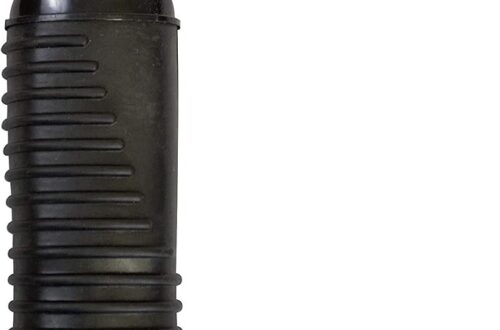Contoured grip utensils have been designed specifically to address the challenges faced by stroke survivors during mealtime. These utensils are tailored to aid those with hand and mouth coordination difficulties, as well as issues with chewing and swallowing. The primary goal of such adaptive eating tools is to reduce the physical demands of feeding, allowing users to eat more independently.
One of the key features of these utensils is their contoured design. This design typically includes large, soft rubber handles that cushion the grip, making them particularly beneficial for stroke survivors with limited hand mobility. The ergonomic shape of these handles is intended to provide a comfortable and secure grip, reducing the strain on the user’s hands and fingers. This feature can significantly aid individuals with reduced dexterity or grip strength, which is a common after-effect of stroke.
Another important aspect of these utensils is their adaptability. Many of them, such as the Sure Grip Bendable Utensils, feature a bendable design. This design allows the utensils to be bent at an angle that is comfortable for the user, accommodating various grip positions and making it easier to reach the mouth without straining the arm. This flexibility is crucial for those with limited range of motion in their hands and wrists.
Some utensils also incorporate features like finger loops, which can be particularly useful for individuals with little or no grip strength. These loops help keep the hands in a more natural gripping position, which is important to prevent the tightening of tendons and loss of neurological connections.
In addition to contoured grip utensils, other adaptive eating tools can also make a significant difference for stroke survivors. These include plate guards, which create barriers around plates to prevent food from falling off, and non-slip mats that keep dishes stable. For those who have difficulty swallowing, known as dysphagia, thickening agents can be used to adjust the viscosity of liquids, making them safer and easier to swallow.
For optimal results, it’s recommended that stroke survivors, caregivers, and healthcare professionals work together to choose the right adaptive eating utensils and techniques. Occupational therapists can provide valuable insights and customize feeding programs based on the patient’s specific needs. They can also recommend exercises to strengthen the upper limbs, making feeding less frustrating and more efficient.
Overall, contoured grip utensils and other adaptive eating tools play a vital role in helping stroke survivors regain their independence during mealtime. They not only improve the ease of eating but also promote a greater sense of autonomy and dignity, contributing to a better quality of life.
The information on the effectiveness and various types of contoured grip utensils is based on insights from various sources, including Saebo, Performance Health, BrightStar Care, and The Wright Stuff, which specialize in healthcare products and provide valuable information about adaptive utensils for stroke survivors.



